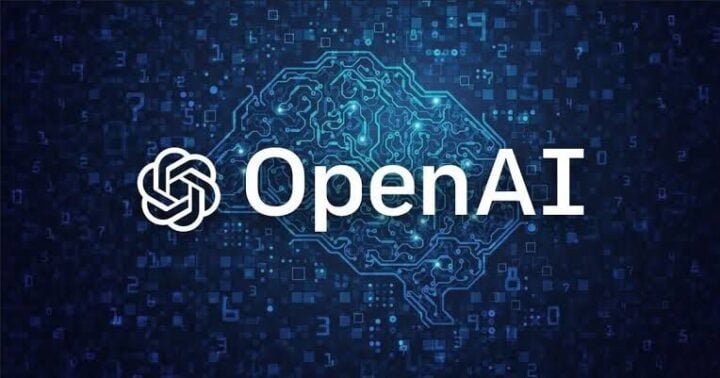Click here to buy secure, speedy, and reliable Web hosting, Cloud hosting, Agency hosting, VPS hosting, Website builder, Business email, Reach email marketing at 20% discount from our Gold Partner Hostinger You can also read 12 Top Reasons to Choose Hostinger’s Best Web Hosting
Confusing with multiple AI services—text generation here, image creation there, code assistance somewhere else, ai agents to make task simpler —can leave teams overwhelmed and constantly context‑switching. You’ve felt the friction: tedious API integrations, inconsistent outputs, and budgeting surprises when services don’t mesh, and every minute spent stitching disparate tools is time lost on real innovation. That’s why the 8 AI tools from OpenAI deliver a unified ecosystem—text, code, images, speech, and more—all accessible through a single provider with consistent APIs and pricing, designed to work together seamlessly.
Create inspirational images from the top AI generators. Simply enter a subject, They’ll apply styles, and you’ll tweak the one you like.
The 8 AI Tools from OpenAI

1. ChatGPT
Use Case: Conversational AI, content drafting, customer support.
Why It Matters: As one of the most versatile text‑based models, ChatGPT can brainstorm blog outlines, answer technical queries, and even draft persuasive emails. Teams use it to automate first‑draft writing, freeing humans to focus on strategy and review.
2. DALL·E
Use Case: Image generation from text descriptions.
Unique Angle: Designers at a marketing agency reduced stock‑photo costs by 40% by generating custom visuals on‑demand—no licensing headaches.
Hide AI-Generated Images in DuckDuckGo to Cut Through the ‘AI Slop’
3. Codex
Use Case: AI‑powered code suggestions and generation.
New Perspective: Beyond autocompletion, Codex can scaffold entire microservices. A fintech startup leveraged Codex to spin up a prototype payments API in under an hour—accelerating investor demos.
4. Whisper
Use Case: Automatic speech recognition (ASR) and translation.
Real‑World Example: A global podcast network cuts transcription time by 80%, using Whisper to generate multilingual transcripts and subtitles ready for editing.
5. Gymnasium (formerly Gym)
Use Case: Reinforcement learning development and benchmarking.
Insight: RL researchers adopted Gymnasium’s updated environments to test novel algorithms—achieving a 15% improvement in sample efficiency on standard benchmarks compared to legacy Gym.
6. RoboSumo
Use Case: Simulated robotics environments for multi‑agent competition.
Implication: Academic labs use RoboSumo as a cost‑effective way to teach robotic coordination and adversarial strategies, without physical hardware or safety concerns.
7. CLIP
Use Case: Cross‑modal embeddings linking text and images.
Use Case Highlight: E‑commerce sites use CLIP to auto‑tag product images—improving search relevance by 25% and driving 8% more conversions.
8. AI Dungeon
Use Case: Interactive storytelling and game scenario generation.
Perspective: While originally built atop OpenAI models, AI Dungeon’s move to an independent engine highlights the flexibility of OpenAI’s APIs—enabling rapid iteration in creative apps.
Mastering ChatGPT Deep Research Mode: A Step-by-Step Guide for In-Depth AI-Powered Research
A Unified Ecosystem: Why It Matters
Consistent APIs: One authentication flow, unified billing, and shared best practices mean less overhead.
Seamless Data Flow: Pass a generated image prompt from DALL·E directly into ChatGPT for an image description, then feed that into Codex to auto‑generate HTML/CSS.
Predictable Scaling: Use familiar rate limits and pricing tiers across tools, simplifying cost forecasts and budget approvals.
Future‑Readiness: OpenAI’s roadmap shows ongoing integration—e.g., multimodal GPT‑4o unifies text, image, audio, and video capabilities in a single model.
Key Takeaways
Eight core services cover text (ChatGPT), code (Codex), visuals (DALL·E, CLIP), speech (Whisper), RL (Gymnasium, RoboSumo), and interactive narratives (AI Dungeon).
Unified billing and APIs streamline adoption and reduce engineering friction.
Real‑world wins include faster prototyping, cost savings on stock assets, and improved search relevance.
Synergy potential: chaining outputs across models amplifies productivity (e.g., text‑to‑image‑to‑code workflows).
Long‑term vision: OpenAI’s ecosystem is evolving toward a single multimodal agent supporting all formats.
FAQs
Q1: What’s the best OpenAI tool for generating code snippets on demand?
Codex is purpose‑built for code generation and can scaffold entire functions or microservices, making it ideal for rapid prototyping and reducing boilerplate.
Q2: Can I use these OpenAI tools for free?
OpenAI offers free trial credits for new users. Beyond that, tiered pricing applies—review each service’s pricing page to plan your usage.
Q3: How secure is my data when using OpenAI’s APIs?
OpenAI adheres to industry‑standard encryption in transit and at rest. User prompts and outputs are not used to train models by default, ensuring privacy.
Q4: How do I get started with multiple OpenAI tools?
Sign up for an OpenAI account, obtain a single API key, then explore the API reference to initialize each client library.
How this AI Graphic-Design Agent Replaces an $82k/yr Graphic Designer (N8N)
Conclusion
By exploring these 8 AI tools from OpenAI, you gain a powerful, interconnected suite that transforms how you write, design, code, and experiment. Whether you’re a startup aiming for rapid prototyping or an enterprise optimizing legacy workflows, this ecosystem unlocks new levels of efficiency.
Ready to dive in? Explore our guide on integrating AI into your workflow and subscribe to SmashingApps.com for weekly insights and tutorials on leveraging these cutting‑edge tools.
Now loading...






